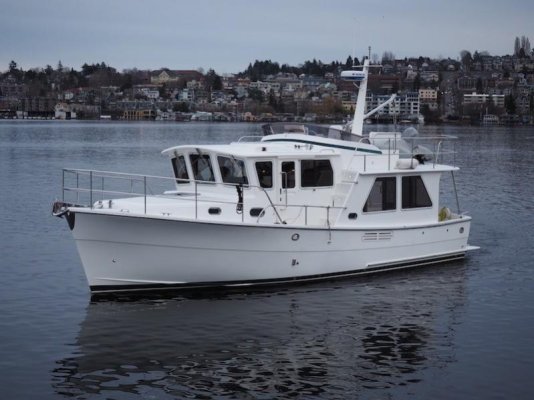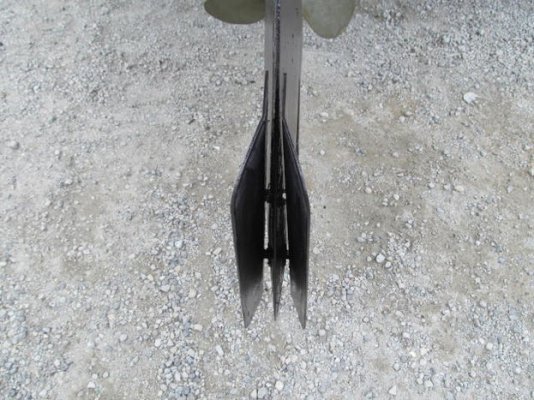For about 20 to 30 minutes I watched a pair of 37 footers come straight at me in 4' following, quartering seas. The difference was startling.
Internet specs and pics of like boats:
37 Mariner Yachts International;
LOA: 37 ft
LWL: 34 ft 6 in
Beam: 13 ft 4 in
Max Draft: 4 ft
Displacement: 25,000 lb
37 Nordic Tug;
LOA: 39 ft 2 in
LWL: 37 ft 4 in
Beam: 12 ft 11 in
Maximum Draft: 4 ft 4 in
Displacement: 22,600 lbs
Both single Cummins.
The NT was probably close to 4' lower and had an RIB on the stern. The MYI had an RIB up top.
I estimated the wind to be 15-18 and boat speed 5-7 knots.
The MYI was fighting it all the way.
I could see the stern raise up to starboard, the bow dig in, slewing to port and then a heel to starboard a good 20 degrees before straightening out to do it all again.
The NT plowed through in a straight line and overtook the MYI.
Maybe they were loaded differently, maybe different skill sets, I don't know but I was thinking what a great setup for a sea trial.
Internet specs and pics of like boats:
37 Mariner Yachts International;
LOA: 37 ft
LWL: 34 ft 6 in
Beam: 13 ft 4 in
Max Draft: 4 ft
Displacement: 25,000 lb
37 Nordic Tug;
LOA: 39 ft 2 in
LWL: 37 ft 4 in
Beam: 12 ft 11 in
Maximum Draft: 4 ft 4 in
Displacement: 22,600 lbs
Both single Cummins.
The NT was probably close to 4' lower and had an RIB on the stern. The MYI had an RIB up top.
I estimated the wind to be 15-18 and boat speed 5-7 knots.
The MYI was fighting it all the way.
I could see the stern raise up to starboard, the bow dig in, slewing to port and then a heel to starboard a good 20 degrees before straightening out to do it all again.
The NT plowed through in a straight line and overtook the MYI.
Maybe they were loaded differently, maybe different skill sets, I don't know but I was thinking what a great setup for a sea trial.
Attachments
Last edited:






